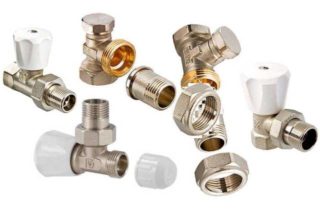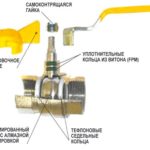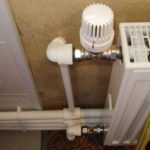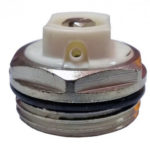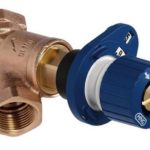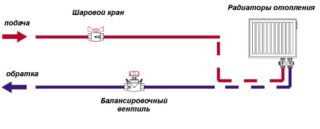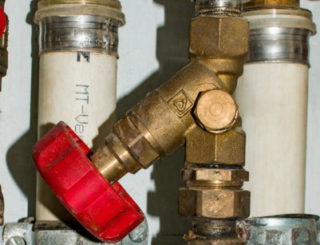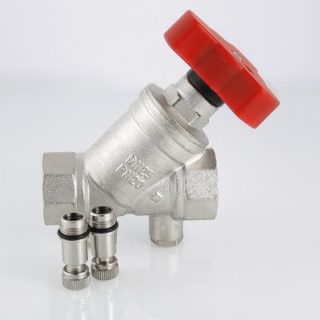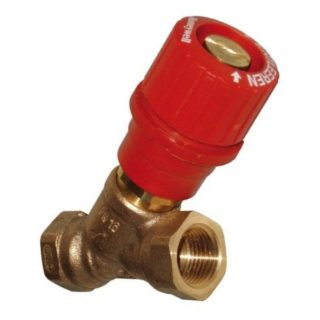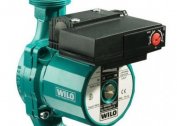The classic control valve for heating is an integral part of the piping operating as part of the boiler equipment. The assortment of these products and the functions they perform over the years only increase. Having familiarized with the existing varieties of control valves for heating radiators, the user will be able to choose the most suitable option for himself.
Control Valve Functions
According to the generally accepted classification, the control valve for heating refers to the elements of stop valves included in the system strapping. Its main purpose is opening and closing the channel for the passage of the coolant directly through the batteries. Modern requirements for the arrangement of strapping prescribe the mandatory equipping of heating systems with locking elements of various types.
Their presence allows in case of an accident to block the movement of the coolant and to carry out troubleshooting operations without removing fluid from the pipes. In addition, due to the limitation of the volume of the circulating carrier, it is possible to maintain a comfortable temperature distribution in a private house or apartment.
Regardless of the type of heating system, the ability to control heat fluxes can reduce fluid flow and balance the distribution of pressures in it. In addition, adjusting elements are used in special devices responsible for maintaining a fixed temperature level.
Types of control valves and their parameters
The types of special valves to control the heat supply to the radiator include:
- regulators made in the form of valve mechanisms with thermal heads, setting a fixed temperature;
- ball valves;
- special balancing valves, controlled by hand and installed in private homes - with their help it is possible to evenly heat the inside of the house;
- bleeding air valves - Maevsky’s manual mechanisms and more advanced automatic air vents.
- Ball
- With thermal head
- Mayevsky crane
- Balancing
The list is supplemented by samples of valve regulators used for washing batteries and draining water. The non-return valve, which prevents the coolant from moving in the opposite direction in networks with forced circulation, also belongs to this class.
Among the indicators characterizing the operation of any type of shut-off valves include:
- standard sizes of devices by which they are selected for specific types of radiators;
- pressure maintained in operating conditions;
- media temperature limit;
- product throughput.
For the correct selection of the shut-off valve, you will need to consider all the parameters together.
The principle of operation of heating taps
The principle of operation of the crane is more convenient to consider the example of a ball valve. To control it, just turn the lamb by hand. The essence of the work of such a mechanism is as follows:
- During mechanical rotation of the crane handle, the impulse is transmitted to the locking element, made in the form of a ball with a hole in the middle.
- Due to the smooth rotation on the path of the fluid flow, an obstacle appears or disappears.
- It either completely blocks the existing passage, or opens it for free passage of the coolant.
It is not possible to regulate the volume of fluid entering the batteries with a ball valve.
The valve that allows you to do this, by its principle of operation, is noticeably different from the ball counterpart. Its internal device allows you to smoothly block the bore for several revolutions. Immediately after changing the balancing, the valve position is fixed, so as not to accidentally violate the device settings. As a rule, such taps are placed on the radiator outlet pipe.
In the assortment of valve products, there are samples with advanced functionality that allows you to implement additional features for regulating the flow of coolant.
Installation and adjustment of cranes
When installing ball valves of an unregulated type, simple schemes are used that allow them to be freely placed on polypropylene branches from the riser even before entering the batteries. Due to the simplicity of the design, the installation of these products is possible on their own. Such shut-off valves do not need additional adjustment.
It is much more difficult to mount the valve devices at the outlet of the heating batteries, where the adjustment of the flow volumes is mandatory. Instead of a ball valve, in this case, a control valve for heating is installed, the installation of which will require the help of specialists. It is possible to do this independently only after carefully studying the installation instructions.
Depending on the layout of the devices and the layout of the heating pipes, it is possible to select a special angular shaped tap suitable for radiators with a decorative coating. When choosing a product, attention is drawn to the value of the ultimate pressure, usually indicated on the body or in the product passport. It with a small error should correspond to the pressure developed in the heating network of a multi-storey residential building.
It is advisable to adhere to the following recommendations:
- For mounting on radiators, one should select high-quality thick-walled brass taps that form a connection with a union nut - American. Its presence will allow, if necessary, to quickly disconnect the emergency wiring without unnecessary rotational operations.
- On a single-pipe riser, you will need to install a bypass installed with a slight offset from the main pipe.
Even more difficult is the question of installing a balancing valve, which needs special adjustment operations. In this situation, without the help of specialists can not do.
Popular models of control valves
Among well-known models of adjustable valves, products from the following companies stand out: Honeywell (USA), Valtec and Itar (both from Italy).
The first place in unofficial ratings is confidently taken by the Italian manufacturer Valtec, which is explained by the high quality of the products offered. The latter are made not of the usual silumin, but on the basis of sanitary brass brand CW617N. Ball valves from this company work well in the temperature range from -30 to +150 degrees. In the event of a breakdown, the structure is easily restored, for which it is enough to replace the stem and its seal. The service life of these products is at least 25 years. The advantages of Valtec cranes include:
- the presence of a complete set of models with half bends;
- the ability to select corner patterns;
- a wide range of colors;
- wear-resistant polymer seals.
Their disadvantage is the high cost and the inability to replace the ball and seals.
This is followed by products from the Italian manufacturer Itar, the advantages of which include the use of ISO 9001 quality standard in production. Thanks to him, the company launched the production of ball valves in almost 100 countries of the world.The advantages are manifested in the use in the production of modern technologies that completely eliminate marriage due to human faults. The disadvantages of these products include a small selection of connection diameters and the presence of only red levers in the assortment.
Honeywell valves feature a brass-reinforced case. For connection to pipes and batteries, they have an internal thread. All products after assembly are carefully monitored and designed for a working pressure of 16 bar. The ball mechanism of the product is launched not by turning the lever, but under the action of a special electric valve. Such a device allows you to control the valve remotely (from the remote control) and simultaneously control several channels of water supply to the system.
The advantages of these models include:
- relatively low cost;
- high quality gaskets;
- ability to work at coolant temperatures from 2 to 130 degrees.
These products have one drawback - they can only be mounted on strapping equipment that has an external thread.
